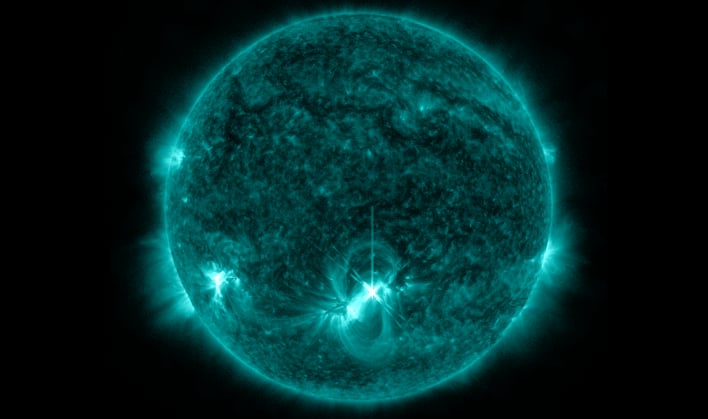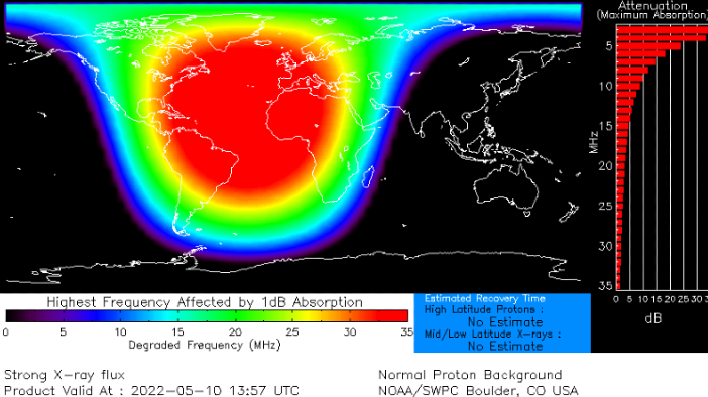Huge Solar Flare Explosion Disrupts Radio Comms And Could Cause Power Blackouts On Earth

In the last month, the Earth has been inflicted with multiple strong solar storms that have caused radio blackouts in various parts of the world. The last solar storm caused blackouts in Australia and parts of Asia.
The uptick in solar activity is a result of the Sun moving closer to the peak of its maximum phase of its solar cycle. While the Sun won't reach its peak until 2025, the growing number of sunspots on the solar disk has already begun to create a bit of havoc for Earth.
The solar flare that occurred on May 10th is not expected to be a severe one, but it will still likely also cause GPS disruptions, and distort the navigation systems for airplanes and ships. NASA stated that if the solar storm towards the Earth were any stronger, it could have possibly damaged satellites causing disruptions in mobile networks and internet services.

Following the solar flare, a "mish-mash of CMEs" has surged away from the Sun's southern hemisphere. It is uncertain if these CMEs are related to the X-flare or instead of some other, lesser explosions that happened at nearly the same time. According to SpaceWeather.com, "there was a filament eruption to the right of the X-flare, and a C4-class solar flare in a different sunspot to the left." NOAA is currently analyzing these events using computer models to determine if one of the CMEs might impact Earth.
Top Image Courtesy of NASA

